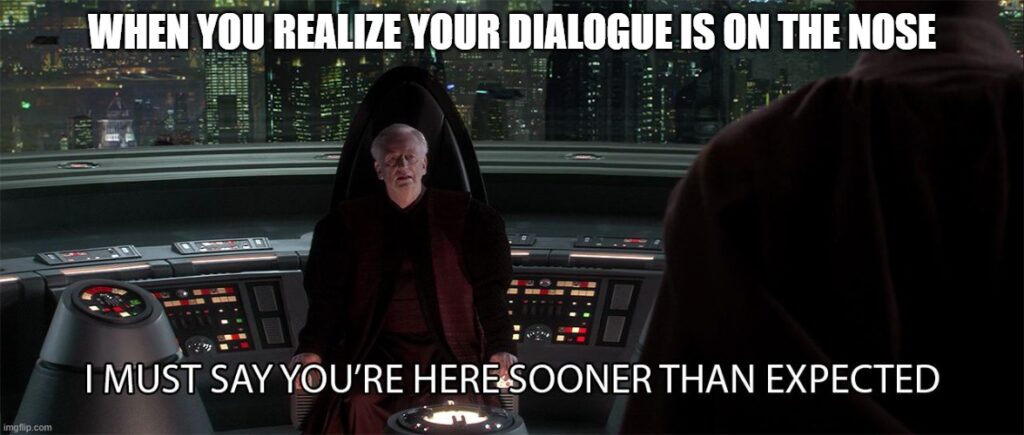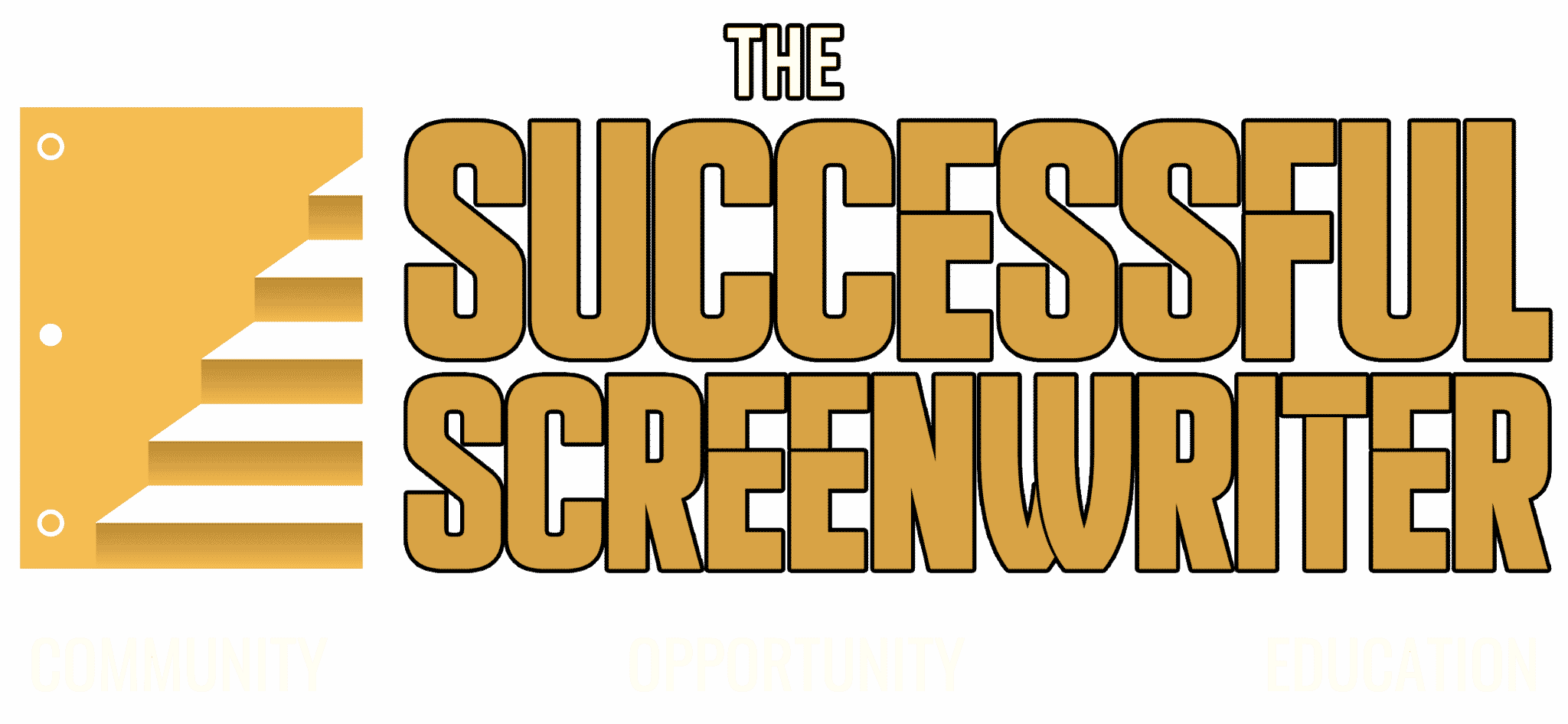
Your dialogue is the lifeblood of your screenplay. It’s what takes an average scene and turns it into something great. But when it comes to writing good dialogue, it can be helpful to know what hazards to avoid. In this article, we’ll discuss 10 common mistakes people make when writing their characters’ conversations—and how you can avoid them!
1. Using $5 words/Trying to sound sophisticated (i.e. Mamet & Sorkin)
We shouldn’t need a dictionary to read your script.
The problem with trying to emulate writers like David Mamet (Glengarry Glen Ross) and Aaron Sorkin (The West Wing) is that most people don’t have their command of the language. Sorkin & Mamet cut their teeth with years of writing stage plays which are all dialogue! Those who try to emulate them end up with scripts that read as pretentious and try to sound smart by using lots of big words. Instead:
- Keep it simple: You don’t need to use every fancy word in your vocabulary. If you do, it will sound like you’re trying too hard and make the reader feel like they have to work harder than necessary to understand what you’re saying. We shouldn’t need a dictionary to read your script.
- Use the right word: Don’t replace “very” or “really” with unnecessarily complicated phrases or sentences that take up more space than necessary. For example, instead of saying “I was very surprised by this,” try something simpler like “I was shocked.”
2. Exposition! Dialogue that exists purely to move the story along.
Unfortunately, it’s all too uncommon for developing writers to fall into a trap of thinking that their dialogue needs to explain everything. They’ll write long, detailed speeches or conversations that fill in the audience on everything from the backstory of the characters’ relationships, to what exactly is going on in any given scene. This obviously needs to be edited out in a rewrite and go back to the show don’t tell, however…
Exposition can actually be useful when it comes to a natural break in the story–for instance if one character reveals a deep emotional truth to another character. Which is often tied to the theme of the script. How the other character receives that new revelation can tell us something about both characters without being too obvious or boring (and makes them seem human)
3. Too many characters in a scene.
Another common dialogue mistake is having too many characters in a scene. This can confuse your reader and make it hard for them to track who’s who on the page. If you have too many characters, consider cutting them out of the scene altogether or splitting up their lines into a different scene so they aren’t all crammed into one spot on the page.
4. Failure to develop subtext.
Subtext is the hidden meaning behind the words you say. It’s what your character does not say, but wants to say.
Subtext can be used to reveal character, or create tension and conflict between characters
Subtext also allows you as a writer to develop backstories for your characters; something that will help them feel more alive in your script. For example: if one character is always late for meetings with another person (because they want to avoid them), then this information should be revealed through subtext rather than on-the-nose dialogue because it wouldn’t be as meaningful!
5. The characters sound the same.
This is a mistake that is easy to avoid, yet is still all too common. All characters should have their own voice. Even if they seem similar at first, such as from the same neighborhood or family they still don’t have to sound alike! In fact, one of the best ways to make your dialogue interesting is by giving each character a distinct way of speaking–and making sure that everyone can tell who’s talking at any given time.
For example:
-
- “I’m not interested in going out.” (Decisive)
- “One sec, Let me think… F*** No! (Sassy)
- “I won’t be attending this event tonight.” (Elegant)
- “Nope.” (Pragmatic)
6. Using dialogue to overcompensate for weak character development.
This is a common mistake that happens when writers build their central characters around a story concept and not the theme. You may have a great idea for your script–but if it doesn’t come from within your characters, then it’s going to feel forced and unnatural when they talk about it in conversation with each other. It’s best to look at your characters as living embodiments of your story themes. Who they are represents it and informs their struggles and conflicts throughout the journey. To fix this problem try sitting down and conducting an interview with your character. Answer the questions in their voice. How would they respond in an authentic way.
7. Talking about feelings
Talking about feelings is a lot harder than it seems. It’s easy to fall into the trap of characters saying things like “I’m pissed” or “You’re breaking my heart,” but this doesn’t add any depth to the conversation. It’s way too on the nose. One way to fix this is to show the reader what those emotions look like through action instead of dialogue:
-
- When Jane sees her husband for the first time in months, she runs up and hugs him tightly. “Don’t ever do that again” Jane almost squeezes the life out of Jason.
- Jason slammed his fist against the table so hard that the framed picture of him and his wife crashes to the floor. It shatters into pieces at his feet; as he attempts to calm the realization of his deeds settles in.
8. Filler Dialogue
Characters enter a room and all greet each other. Almost as if everyone is waiting for the actual scene to get started
Filler dialogue is dialogue that doesn’t serve a purpose. It’s something you write because you feel like you should be writing something, but it doesn’t move the story forward or reveal anything new about your characters.
- “How are you” is a line I see quite often used in scripts.
- Excessive Introductions are overly used as well. Characters enter a room and all greet each other. Almost as if everyone is waiting for the actual scene to get started.
9. Too much dialogue
This is Filler Dialogues’ ugly cousin. Dialogue should be looked at as a tool in your screenwriting arsenal. Its job is to subtly reveal information about characters and their relationships, rather than using it as a crutch for explaining what’s happening on screen or worse yet one character filling in another character about something we have already read or seen.
How to fix:
- If the reader (audience) and a character have seen something or been privy to information then it doesn’t need to be repeated ad nauseum. You do NOT need to rehash info to other characters to bring them into the loop and up to speed. However, if you write yourself into a corner and you must fill in another character about info that we all know then simply begin the dialogue with ‘here’s what happened.” then end the scene.
- Another clever workaround for instance if you have a scene where the characters are “making a plan” you can intercut the actual dialogue of the plan with the mission itself. That is a great way of showing without rehashing every detail.
10. Incorrect punctuation.
I once read a script which had no punctuation at all. None.
On a personal level, I have to mention this because there have been so many times when I have read scripts and at one point the dialogue was missing punctuation. Yes, this can seem like a small insignificant oversight or even an honest mistake but the ramifications can be huge. I once read a script which had no punctuation at all. None. I couldn’t tell if everyone was yelling at each other or having the times of their lives which completely ruined what had the potential to be a good script.
In Conclusion
Dialogue is one of the most important tools in your writing arsenal. It’s not just something you use to move the story along, but also to develop characters and build subtext. If you’re struggling with dialogue, try going back to who the character is and how they reflect your theme. For the absolutely unavoidable longer blocks of dialogue then try breaking it down into smaller chunks that are easier to manage before adding them back together again. Also, remember that there are multiple ways and distinctions for characters to speak–there’s no one “best” way!
-Geoffrey D. Calhoun
Join our community
Take a seat and come hang out with a community of like-minded writers. We have scripts to discuss, experiences to share, and we’re always here to help. Don’t be shy, join in the conversation




I’ve made all of these mistakes! Thankfully, through lots of practice, revising and study, I’m making them less. But, that number six. That’s a whole master class.
Same here! I try not to cringe at my old work — but it has allowed me to get to this point. Thanks so much for reading!